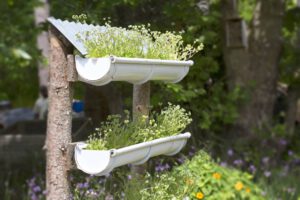Considering installing Gutters in your home or office? Read this article for helpful information. Gutters are a very important part of any building’s water drainage system. They collect water from the roof, ground, and other surfaces and discharge it into the street. When they’re properly installed, gutters can help prevent erosion and water damage from building foundations. Read on Gutters to learn more about Gutters. You may be surprised by how useful and convenient they can be.
The first thing to know about gutters is that they will keep your home dry and protect its foundation from water damage. If you don’t clean your gutters regularly, you could cause the water to overflow and damage your siding and foundation. Clogged gutters are also a breeding ground for pests such as mosquitoes, drain flies, and ticks. This water can also cause root rot in your plants and other structures. Installing gutters is easy and cheap and can help you keep your home in good condition.
The next thing to consider is the size of your gutters. The standard 5-inch k-style gutter can handle the average amount of rainfall, but you can increase the size of your gutters by adding additional downspouts. If you’re unsure of the size you need, consult a professional gutter installer for more information. Generally, aluminum gutters are the most popular choice. Aluminum gutters are rustproof and lightweight and come in a variety of colors.
A seamless gutter is preferred by many people for homes with sloped or intersecting roofs. It is easy to clean the gutters, and you can check their seals through the downspout openings. However, seamless gutters are pricier than other types, and you should consider your budget and aesthetic appeal. Also, keep in mind that the rainy season in your area affects the type of roof you have. When choosing gutters, remember to take into consideration all of the factors that will influence your choice.
When choosing a gutter system, it is important to understand its history. Gutters were first used around 3,000 BC. King Henry III asked to install lead gutters, which protected the tower and created the first working downspout. Henry VIII, famous for dividing the Church from the authority of the Pope and beheading his two wives, accidentally revolutionized the gutter system. He remodeled buildings with stone roofs and parapets, and he also built countless houses with stone parapets and gargoyles.
Using a garden hose is a great way to assess the extent of a gutter blockage. Hose the gutters, dump the debris into a drop cloth, and check for any leaks or other problems. Make sure to check the downspouts and soffits as well, and make sure to rinse the gutters thoroughly afterward. If you discover a leak, use caulk or sealing spray to seal them.
When installed properly, rain gutters prevent water from accumulating on the roof. If not, water will pool on the roof, drench your siding, and even seep into your basement. Despite the fact that rain gutters are extremely important for your home’s foundation, many homeowners neglect them until they experience problems. Fortunately, you can easily install new gutters yourself. And if you have an older home, you’ll be glad you did!
You can even choose to install seamless gutters on your home’s roof. These gutters are formed on-site and are usually 50 feet long. Because of performance issues related to thermal expansion, seamless gutters are not recommended for homes that have longer roofs. Depending on the length of the gutter, seamless gutters can look semi-circular or rectangular in cross-section. Some of them also feature curved ends similar to crown molding. Regardless of your choice, gutters can be painted to match the rest of the building’s trim.

